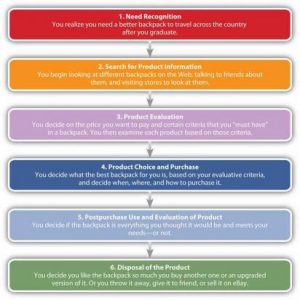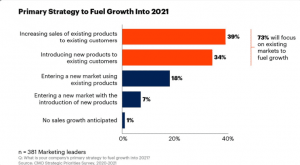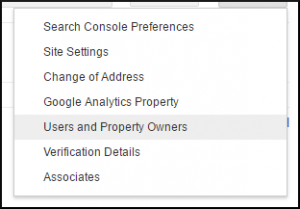Creating a successful cold email campaign is the Holy Grail of a cold mailing. It’s also a pain.
It takes a ton of time, effort, nerves and a slight caffeine overdose to craft a masterpiece.
And yet, when you click send and wait for a tsunami of positive replies nothing happens… I bet you’ve experienced this at least once.
After a year in a company that lives off cold email campaigns, I’ve learned that there may not be a universal email template that converts everyone but with a few simple steps you can achieve great results.
In a cold email campaign, testing is everything
The first thing that you should always keep in mind, whether this is your first cold email campaign or you’ve already sent hundreds of messages, is that each target and each prospect is different. There is no single message that will be effective in every market for every product.
The only thing that will get you consistent results is constant testing. Improve your templates, compare results and remember to only test one part at a time – this way you will be able to see which approach works better. This may sound a bit overwhelming at first but don’t worry, we’ve outlined the essential guidelines to help you craft your killer cold email campaign.
Subject line
The ultimate goal of your cold email campaign is to turn a cold prospect into a paying customer. But before you can persuade anyone with well-written email copy and a great offer, you first have to convince them to open your email. And that’s why a subject line can either save or kill your whole cold email campaign.
Never forget to:
- Personalize – If you include the prospect’s first name in the subject line, it’s less likely that email clients will flag your message as spam. Plus, it will grab a prospect’s attention if they see their name among a sea of impersonal email.
- Keep it as short as possible – It’s best to keep it less than five words. Long subject lines look salesy.
- Never mislead your prospects! – It may give you higher open rates but once they see that your email and subject line have nothing in common they will either: a. completely lose interest in your product, b. report you as spam, or c. give you bad press.
- Avoid using ‘salesy’ words – Terms such as ‘buy’ or ‘offer’ trigger spam and that’s not how you want to be perceived. You can check which words should be avoided here.
- Make it casual – You can write a question or an unfinished sentence. Another idea is writing subject lines completely in lowercase letters.
- Send up to 3-4 messages in one thread – Try to make it continuous but once you see that one approach is not working switch it to something a bit different. Remember, always be testing.
The Preview
The subject line is only one element that encourages a prospect to open your email. Another crucial part is the preview. The preview is the opening of your email that’s already visible in the inbox before clicking on the message. It’s crucial for getting your message opened so remember to:
- NEVER start with describing you or your company! – Put yourself in the recipient’s shoes for a second. Would you care about some stranger’s name and occupation? Probably not.
- Start with something you have in common – Mention a conference you both attended, the same type of company, anything that will make them feel like you’re not just a random person but someone who understands them. When they see that in their inbox they will be more willing to read your email
- Make a personal touch – Write like their friend, not a salesperson. One technique we like to use is to write your email to a friend you actually know first. This will help you keep the content real and conversational.
- Address a problem – Mention a problem which can be solved by your product which shows you understand and can relate to their pain. This approach is called the ‘event’ and is one of the most effective in the cold mailing. It appeals to both a recipient’s head and heart – you can make their job easier and spare them stress and time.
The Body
After writing the opening it’s time to get to the meat of the message – the body. Most people don’t read emails (especially sales emails) thoroughly. How do we know that? One day I sent a draft of a cold email campaign with an internal note in the message to 300 people (I know, it was stupid. Lesson learned). But I still received replies from people who praised my message. Conclusion? Prospects just skim emails and decide if your offer is worth their time if something catches their attention. So remember:
- Keep it as short as possible – Most of the people check their email on mobile devices and don’t bother to even skim long messages. Your first contact should be about getting their attention.
- Use more paragraphs – They make the message clearer, easier to read, and help you keep it better organized.
- Make your keywords stand out – Putting keywords in bold, italics, or underlining them will draw their attention to the most important points. However, be careful not to overuse it because the message may look sloppy and unclear.
- Use bullet points or lists – List the 3 most important benefits or features to highlight the most important points to the reader.
- Use short, simple sentences – Three simple sentences are easier to tackle than one long elaborate sentence. This is especially true for non-technical readers in your market.
- Try to keep it casual – Try to make it sound like you’re sending a message to your friend or colleague.
- Use positive language – Avoid using negative terms as they are counter-effective. Show the profits your product can generate by creating a positive image of your company and product.

The Pitch
Another critical component of your email copy is the pitch. You are selling, so you need to communicate how special your offer is.
- Sell value – Remember to always put emphasis on ‘you’ and ‘your’ rather that ‘I’, ‘me’, or our’.
- Keep it casual – Just like the rest of the message.
- Focus on BENEFITS, not features – Emails should serve the customer not the product. So show the results that your product will deliver and not just the cool bells and whistles of the product. Start with the “why” not the “how”.
- Don’t reveal all of your cards in one message – If you do, it won’t be clear what the most important point is and you won’t have anything new to add in following messages.
- Use numbers – They stand out in plain text, draw attention, and give solid information about your product.
- Give social proof – Show how you’ve helped other companies, preferably ones that are similar to your prospect. Talk about how you specifically solved their problems.
The Call-To-Action
After you’ve addressed the problem and showed the solution, you need to guide the prospect to where they can learn more about your offer (and buy). It’s time for your Call-To-Action.
Your Call-To-Action (or CTA) should be:
- Short – Choose one consistent CTA, it’s easier for the receiver to know what to do.
- Direct – Propose a date of the call or meeting. You may also give some options for the prospect to choose but remember to stick to one action.
- Specific – The more specific you are, the more tangible the offer becomes. The more tangible the offer, the more likely someone is to take action.
The PS
Last but certainly not least, is the PS. And please never underestimate it. The PS is one of the most frequently read parts of an email.
It significantly stands out, after your signature, from the rest of the message which makes it a great place to give some additional info. You should include something important about your product, company or offer. Be sure to keep it short – don’t ruin the advantage of PS by adding more than one or two short sentences.
Digital & Social Articles on Business 2 Community(106)
Report Post





